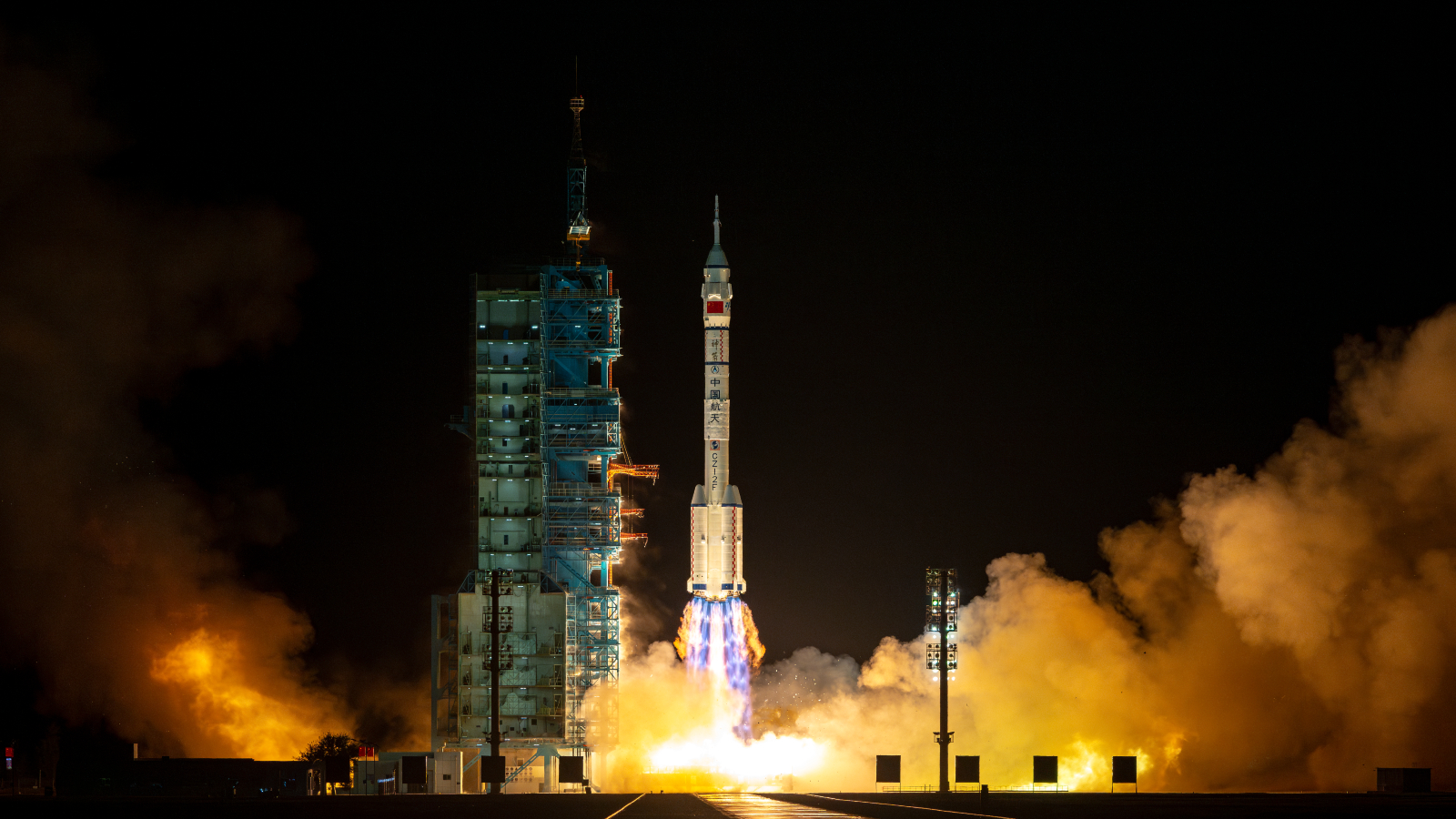Three more Chinese astronauts are now stranded in space following successful rescue of their colleagues
The Shenzhou-21 crew has been marooned on China's Tiangong space station after three of their colleagues were brought back to Earth in the wrong spacecraft. For now, the astronauts have no safe way of returning home.

Three more Chinese astronauts, or taikonauts, are now marooned in space following the successful return of their previously stranded comrades. The latest development highlights a potential flaw in China's space protocols, experts say, which could put astronauts needlessly at risk.
The latest stranded trio — Zhang Lu, Wu Fei and Zhang Hongzhang — are the crew of the Shenzhou-21 mission. They have been living onboard China's Tiangong space station since Oct. 31, shortly after they were launched into space by a Long March 2F rocket. Their mission was to take over from the station's incumbent Shenzhou-20 crew, made up of taikonauts Wang Jie, Chen Zhongrui and Chen Dong, who were originally due to return to Earth on Nov. 5.
However, after a successful handover period, the Shenzhou-20 crew's return trip was called off at the last minute when a piece of suspected space junk hit their return capsule. After tests revealed a crack in the viewing port of the struck spacecraft, the Shenzhou-20 crew boarded the return capsule designated for the Shenzhou-21 crew and successfully returned to Earth on Friday (Nov. 14).
But while many were quick to celebrate the return of the Shenzhou-20 crew, who completed the longest single spaceflight by any taikonauts (204 days), this now means that the Shenzhou-21 crew has no way of returning to Earth themselves, Live Science's sister site Space.com reported.
Recent unconfirmed reports of activity by the China Manned Space Agency (CMSA) hint that an empty replacement return capsule, dubbed Shenzhou-22, could be launched to Taingong as early as Nov. 24, according to Space News. However, if something potentially dangerous happens to the Shenzhou-21 crew before then, such as another space junk impact on the main station, they may not be able to safely return to Earth.

"I'm very glad that they (Shenzhou-20 crew) got home, but it is a bit disconcerting that the replacement crew apparently does not have a vehicle to come back to Earth," Victoria Samson, chief director of space security and stability at the Colorado-based nonprofit Secure World Foundation, recently told Scientific American.
Once the new return capsule eventually arrives at Tiangong, the damaged Shenzhou-20 capsule will likely be detached from the station and deorbited into the Pacific Ocean, according to Reuters. The Shenzhou-21 crew is widely expected to complete their six-month mission, as originally planned.
Get the world’s most fascinating discoveries delivered straight to your inbox.
It is currently unclear why CMSA decided to return the Shenzhou-20 crew before a new capsule was sent into space. It could be that Tiangong, which is only one-fifth the size of the International Space Station (ISS), could not safely support all six taikonauts at once, although the CMSA had previously stated that this was not an issue.

It may also be possible that the stranded crew could return home on the damaged Shenzhou-20 capsule in an emergency scenario. These spacecraft are separated into three detachable sections — a power and propulsion module, crew living quarters, and a parachute-assisted return module, according to Ars Technica. And as long as the cracked windshield is not part of the main return module, it may be able to deliver the stranded crew to Earth if push comes to shove.
Unfortunately, due to the limited information that China reveals about its missions and spacecraft designs, we may never know the full explanation.
The respective predicaments of the Shenzhou-20 and Shenzhou-21 crews are reminiscent of similar "strandings" onboard the ISS. The most notable of these incidents was the recent saga of NASA astronauts Suni Williams and Butch Wilmore, who returned to Earth in March after being stuck in space for around nine months, as well as the record-breaking story of Frank Rubio, who inadvertently stayed in space for over a year.
But in both of these previous situations, the stranded astronauts could have safely returned to Earth at any time on board the remaining return capsules, which were already docked at the ISS.

Harry is a U.K.-based senior staff writer at Live Science. He studied marine biology at the University of Exeter before training to become a journalist. He covers a wide range of topics including space exploration, planetary science, space weather, climate change, animal behavior and paleontology. His recent work on the solar maximum won "best space submission" at the 2024 Aerospace Media Awards and was shortlisted in the "top scoop" category at the NCTJ Awards for Excellence in 2023. He also writes Live Science's weekly Earth from space series.
You must confirm your public display name before commenting
Please logout and then login again, you will then be prompted to enter your display name.
